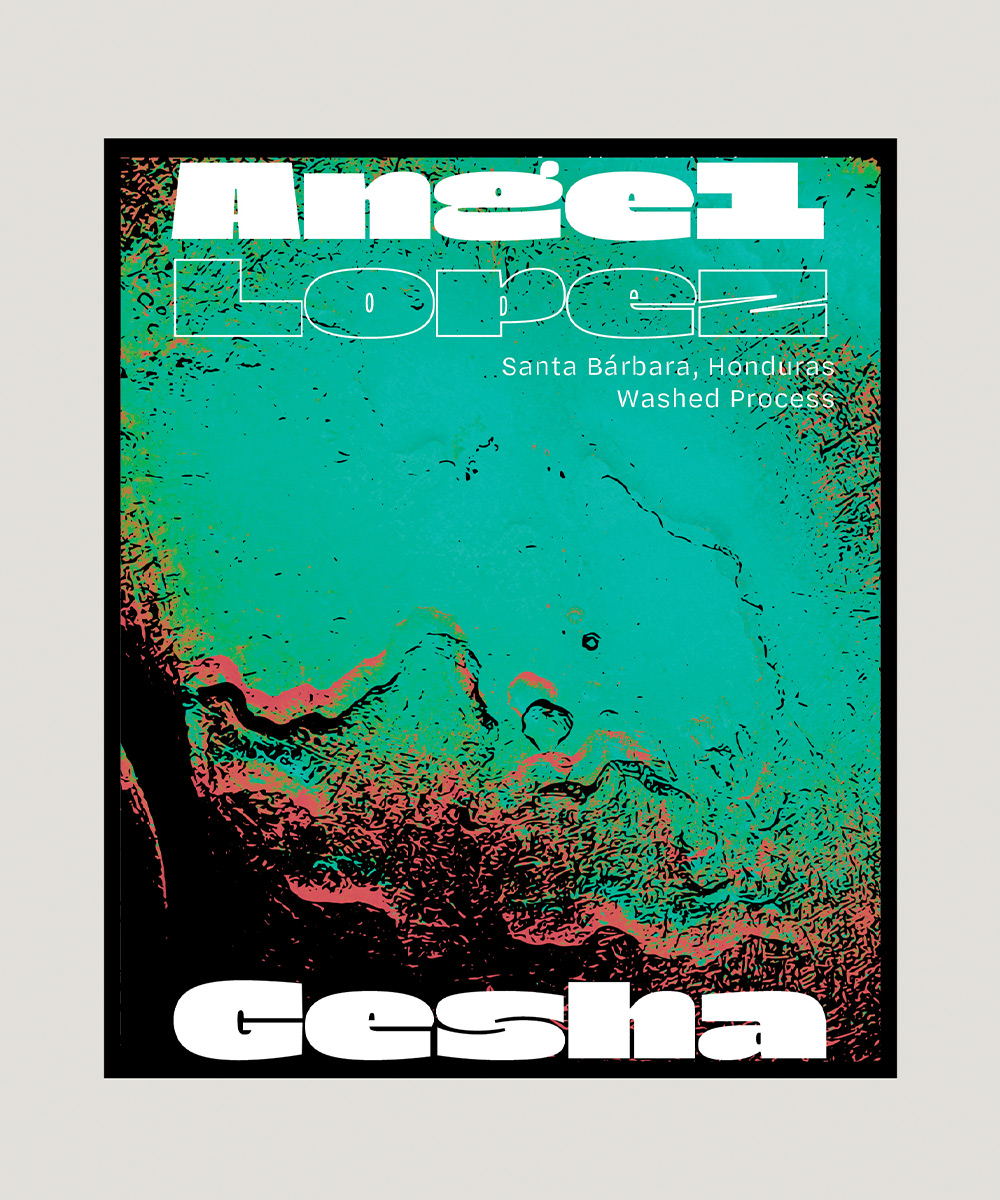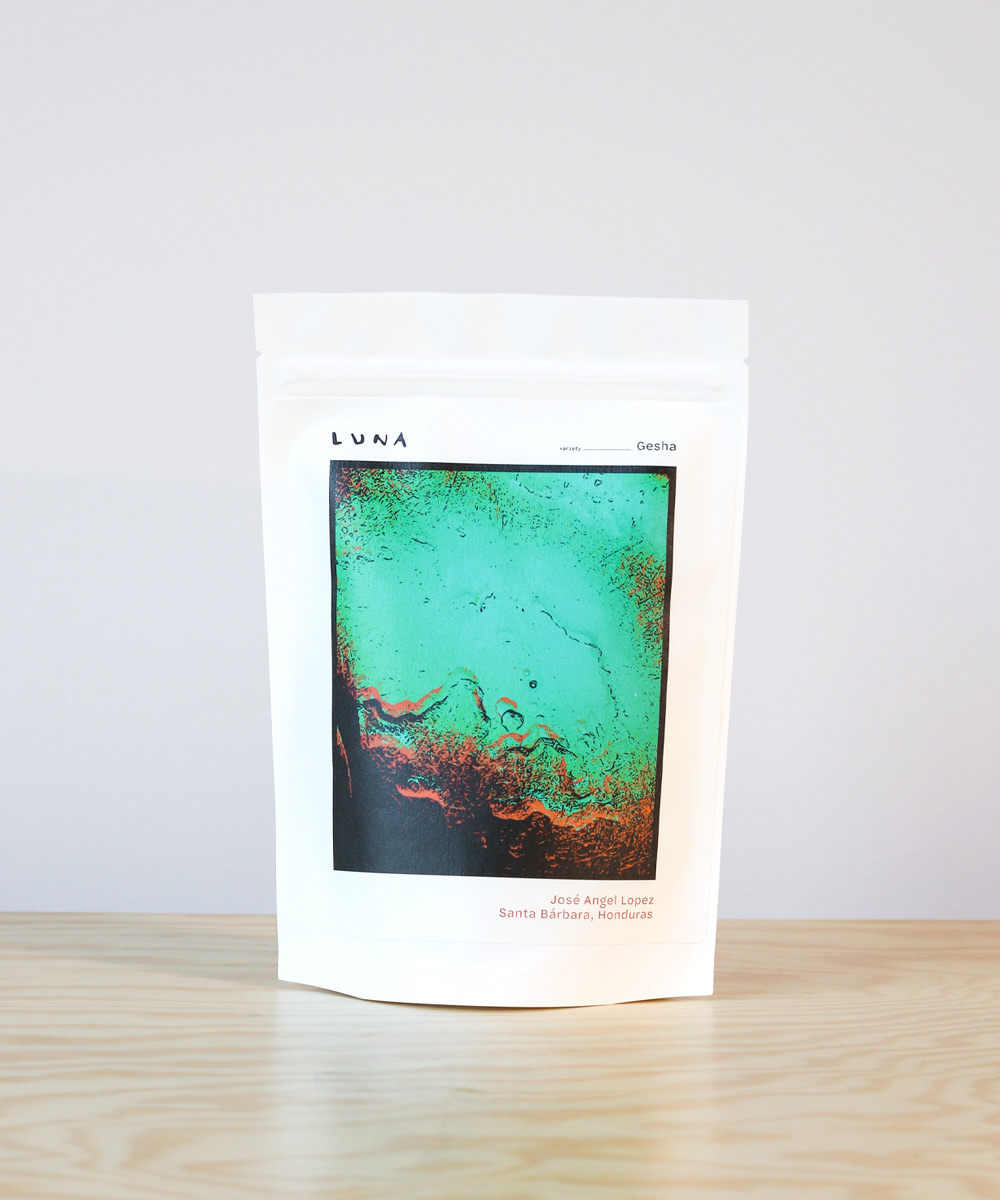José Angel Lopez ~ Gesha from Santa Bárbara, Honduras (2023)
US$25.50
Out of stock
250g.
This is a very limited release
Producer: José Angel Lopez
Place: Santa Barbara, Honduras
Variety: Gesha
Processing: Washed
Exporter: Beneficio San Vicente
Harvest: April 2023
Tasting notes: jammy, oolong, nougat
Sourced from friends, this Gesha lot was picked and processed by José Angel Lopez on his farm in Santa Bárbara, Honduras. Fermented as a traditional washed process using a concrete tank for 24hrs before being washed and dried. Roasted for filter. Fruity and sweet.
About José Angel
Jose Angel Lopez is farming Pacas (and a touch of Parainema & this Gesha) on a cool 1 hectare in the Piedras Amarillas area of Santa Barbara. That signature Santa Barbara weather is like clockwork – cool mist enveloping the mountainsides of the national park reserve each afternoon. This micro climate is thanks to close proximity to Lake Yojoa, introducing this cooling effect that is an incredible asset to growing coffee slowly, allowing more time for nutrient uptake and slower maturation of the fruit.
Before working on his own farm, Jose was working as a picker with the notable Moreno family in Los Andes. José didn’t have any wet milling equipment or drying tables initially, so he borrowed from neighbours to get his coffee ready for delivery to the dry mill in the first couple years. That reliance on your community to get to the next step is critical, and something we can totally relate to. Once we received that first lot nearly four years ago, I reached out to Benjamin to see if I could buy a de-pulper for José as thanks for the lovely coffee but also thinking ahead to next year’s harvest. With one hurdle out of the way perhaps José could find a spot on his property to process his lots. Benjamin actually happened to have a de-pulper hanging around on his farm that he wasn’t using, so the next time José was at the dry mill, the de-pulper was handed over.
This year, José’s systems have fully come together with the completion of a fermentation tank and a solar dryer. He still needs one more dryer to accommodate the full (growing) harvest but if this year’s Pacas and this special Gesha lot is any indication, he’s well on his way to an established farm producing exceptional Coffees.
Processing
The typical method of processing in Santa Bárbara goes a little something like this:
First the coffee fruit is floated to rinse off any dirt and remove any that float (if they float it means either there’s no coffee seed inside the parchment layer of the fruit, or there’s a lack of nutrient density). Then the fruit goes through a de-pulper, landing in a concrete or ceramic tank (José Angel’s is concrete). The fruit rests in a pile to ferment without water overnight. In the mid morning the coffee seeds are checked and if the mucilage is sufficiently metabolized and no longer sticky, then water is introduced to the tank to wash the parchment. Once that’s done, the coffee is moved to raised solar dryers to dry over a 1-2 week period, allowing for the moisture come down slowly to around 10-11%. The dried parchment is put in nylon bags and is delivered to the dry mill, where it will be stored until it’s pretty close to export time. The idea is to mill as close to the shipment time as possible to maximize shelf life of the resulting green coffee.

